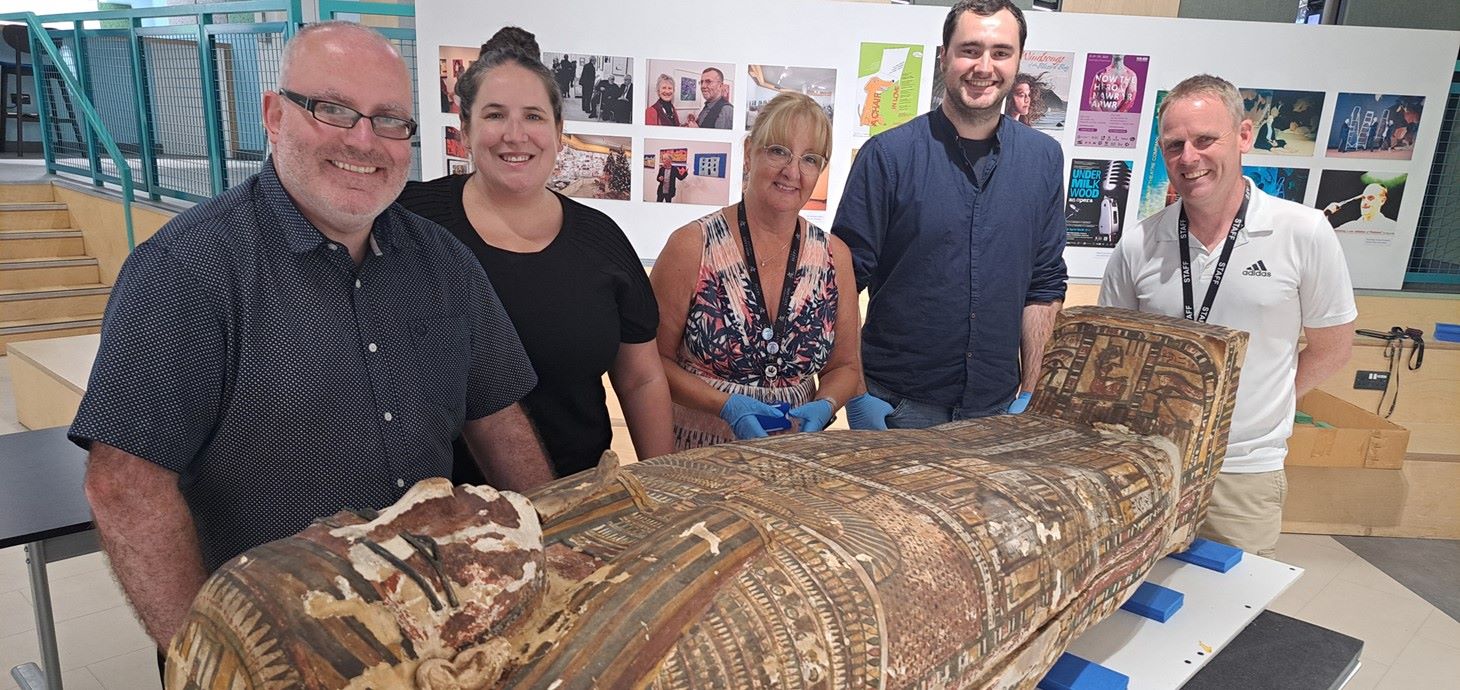
(From left) Museum curator Dr Ken Griffin, collections access manager Dr Meg Gundlach, museum manager Wendy Goodridge, PhD researcher John Rogers and learning and engagement co-ordinator Phil Hobbs with the coffin.
An ancient Egyptian coffin has returned to Swansea after a painstaking 26-year project to bring it back to life.
The artefact, believed to date back to around 650 BC, is now at Swansea University’s award-winning Egypt Centre once again after thousands of hours of conservation work at Cardiff University.
The coffin, originally made for a man called Ankhpakhered in the city of Thebes, was transported back under the watchful eye of the museum’s curator Dr Ken Griffin. He said: “The coffin had to be painstakingly cleaned, reconstructed, and consolidated to prevent it from deteriorating further and we are thrilled to have it back again.
“It was gifted to us by Aberystwyth University in 1997 but details about its history are sketchy. It actually ended up being used as a storage box at one time, with other Egyptian objects placed in it for safekeeping.”
Appropriately enough, among those on hand to carefully unpack it on its arrival was museum manager Wendy Goodridge, who had originally brought the coffin to Cardiff’s School of History, Archaeology and Religion.
She said: “We weren’t sure what they would be able to do with it as it was in such a poor state. To see it now, so wonderfully restored after so much hard work, is beyond the wildest dreams we had back then. It has definitely been worth waiting for.”
During its time in Cardiff it has been worked on by conservation experts and generations of students. Cardiff University’s Phil Parkes explained that the wooden coffin was covered in textile and then had a thin layer of decorated plaster over the top.
He said: “Much of that textile had become detached over time and was just hanging loose. The separate wooden head was detached and there were a couple of large pieces of wood missing, the side of the base had fallen off and it was in a very sorry condition overall.
“The students have brought it back to a condition where the entire coffin is now stable and can go on display.”
Dr Griffin said: “It is fantastic that it has played such a unique role in so many students’ learning – we know of at least 50 who have used it as part of their research. Besides being such an interesting piece of history, it has played a part in shaping the skills of our future experts.”
Now the coffin has been repaired, brightly coloured depictions of Egyptian gods and hieroglyphs bearing messages for the afterlife can be clearly seen, allowing Egyptologists to gain a better understanding of its history.
They say markings on the lid show that it was later used for another occupant, a man called Djedher, but when it arrived in the UK at the turn of the century it actually contained a different mummy, a female. It is speculated that this body may have been put in there to increase the coffin’s sale value to eager British collectors at the time.
The coffin is currently in storage but it is planned to put it on display in the House of Death gallery at the Egypt Centre.
To read more about the coffin’s history, complete with photographs and 3D images, go to Dr Griffin’s latest blog
